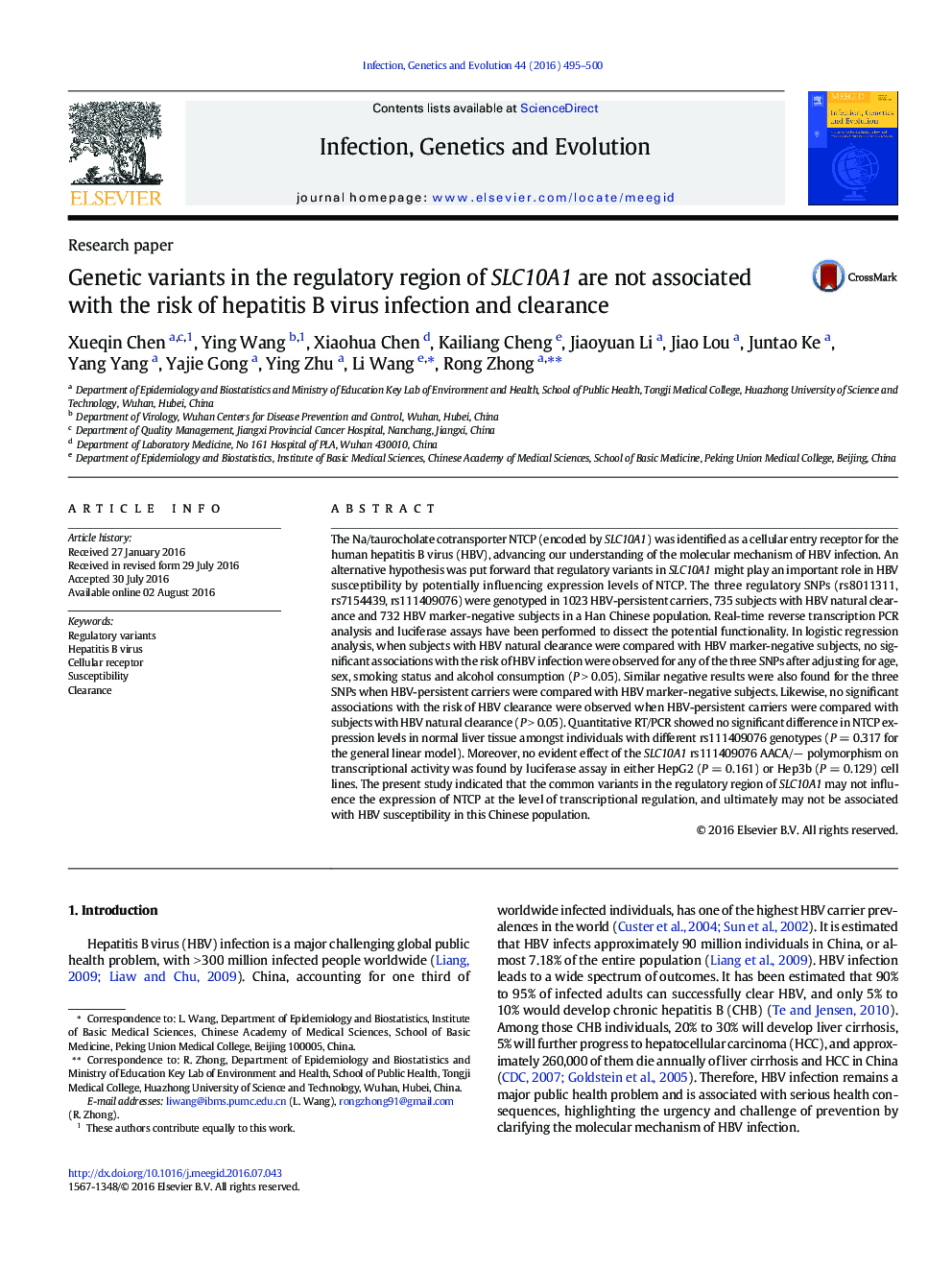| Article ID | Journal | Published Year | Pages | File Type |
|---|---|---|---|---|
| 5908221 | Infection, Genetics and Evolution | 2016 | 6 Pages |
Abstract
The Na/taurocholate cotransporter NTCP (encoded by SLC10A1) was identified as a cellular entry receptor for the human hepatitis B virus (HBV), advancing our understanding of the molecular mechanism of HBV infection. An alternative hypothesis was put forward that regulatory variants in SLC10A1 might play an important role in HBV susceptibility by potentially influencing expression levels of NTCP. The three regulatory SNPs (rs8011311, rs7154439, rs111409076) were genotyped in 1023 HBV-persistent carriers, 735 subjects with HBV natural clearance and 732 HBV marker-negative subjects in a Han Chinese population. Real-time reverse transcription PCR analysis and luciferase assays have been performed to dissect the potential functionality. In logistic regression analysis, when subjects with HBV natural clearance were compared with HBV marker-negative subjects, no significant associations with the risk of HBV infection were observed for any of the three SNPs after adjusting for age, sex, smoking status and alcohol consumption (PÂ >Â 0.05). Similar negative results were also found for the three SNPs when HBV-persistent carriers were compared with HBV marker-negative subjects. Likewise, no significant associations with the risk of HBV clearance were observed when HBV-persistent carriers were compared with subjects with HBV natural clearance (PÂ >Â 0.05). Quantitative RT/PCR showed no significant difference in NTCP expression levels in normal liver tissue amongst individuals with different rs111409076 genotypes (PÂ =Â 0.317 for the general linear model). Moreover, no evident effect of the SLC10A1 rs111409076 AACA/â polymorphism on transcriptional activity was found by luciferase assay in either HepG2 (PÂ =Â 0.161) or Hep3b (PÂ =Â 0.129) cell lines. The present study indicated that the common variants in the regulatory region of SLC10A1 may not influence the expression of NTCP at the level of transcriptional regulation, and ultimately may not be associated with HBV susceptibility in this Chinese population.
Related Topics
Life Sciences
Agricultural and Biological Sciences
Ecology, Evolution, Behavior and Systematics
Authors
Xueqin Chen, Ying Wang, Xiaohua Chen, Kailiang Cheng, Jiaoyuan Li, Jiao Lou, Juntao Ke, Yang Yang, Yajie Gong, Ying Zhu, Li Wang, Rong Zhong,
